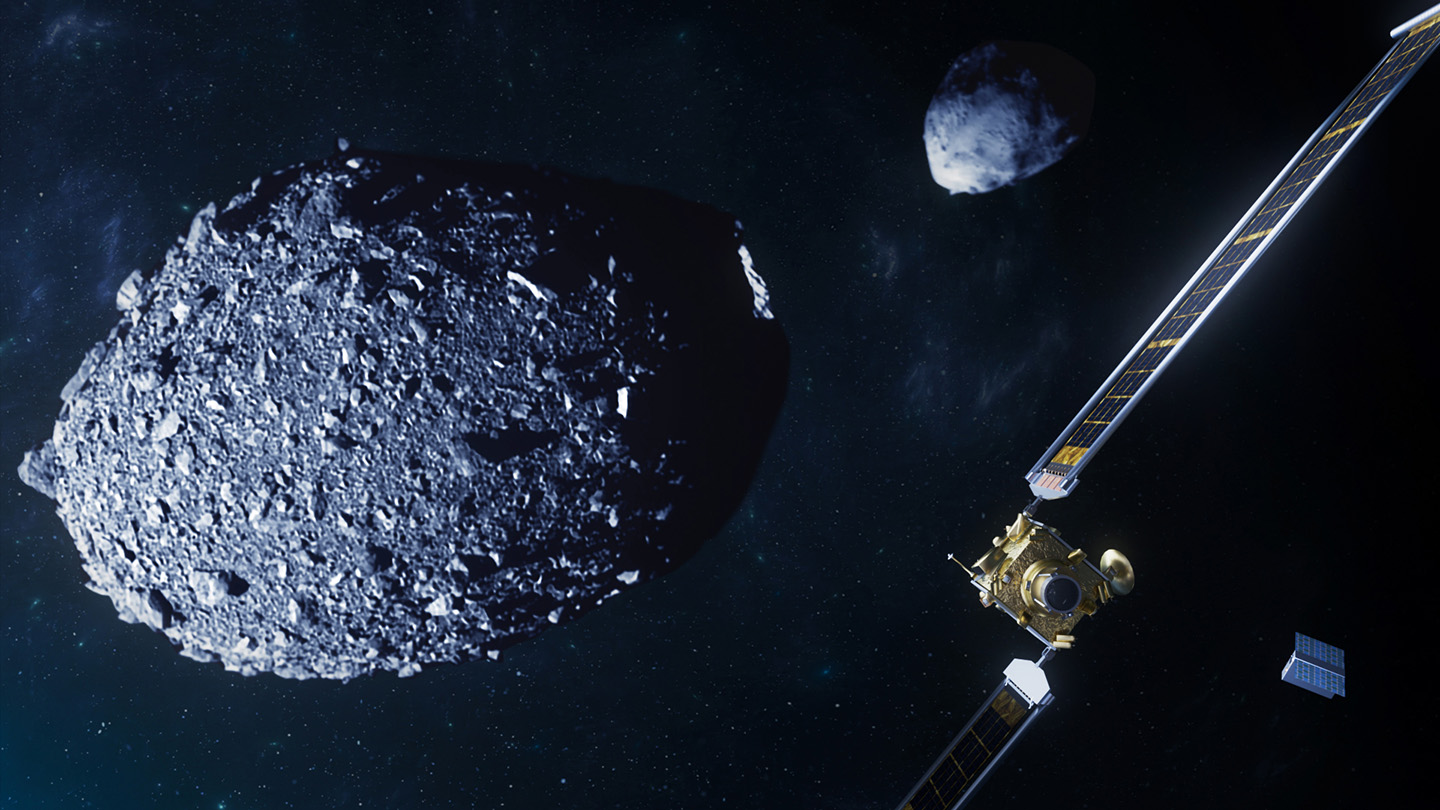Press Release
DART Mission Recognized for Aerospace Excellence
The American Institute of Aeronautics and Astronautics (AIAA) recognized NASA’s Double Asteroid Redirection Test (DART) with the organization’s newest award — the AIAA Award for Aerospace Excellence — at the AIAA Awards Gala on May 18.
The AIAA Premier Awards commemorate the “most influential and inspiring individuals in aerospace.” The Aerospace Excellence award celebrated DART for marking “humanity’s first time purposely changing the motion of a celestial object by a team of protectors of our home planet.”
Systems engineer and DART propulsion lead Jeremy John of the Johns Hopkins Applied Physics Laboratory (APL) in Laurel, Maryland, and NASA Planetary Defense Officer Lindley Johnson accepted the award for the DART team.
Designed, built and operated by APL for NASA’s Planetary Defense Coordination Office (PDCO), which oversees the agency’s ongoing efforts in planetary defense, DART was humanity’s first mission to intentionally move a celestial object, impacting the asteroid Dimorphos on Sept. 26, 2022. DART’s collision with Dimorphos changed the asteroid’s orbit period around its companion asteroid, Didymos, by 33 minutes.
“The scientists and engineers of the DART team integrated the decades of planetary defense technology we have been maturing at APL and translated that into a first-of-its-kind accomplishment for the benefit of all of humanity,” said Bobby Braun, head of APL’s Space Exploration Sector. “I am incredibly proud of the hard work, tireless drive and meticulous preparation of the whole DART team.”
DART launched in November 2021 from Vandenberg Space Force Base in California on a SpaceX Falcon 9 rocket, journeying for 10 months toward its target asteroid, Dimorphos. The spacecraft’s collision with the asteroid effectively demonstrated the world’s first planetary defense technology capability.
Observations from telescopes and radar facilities across the globe helped scientists analyze how much DART’s impact changed Dimorphos’ orbit around Didymos. Researchers initially expected the impact to shorten Dimorphos’ orbit by about 1%, or roughly 10 minutes, but post-impact observations showed the change was over three times longer.
Images returned by DART’s onboard Didymos Reconnaissance and Asteroid Camera for Optical navigation (DRACO), the Italian Space Agency’s Light Italian CubeSat for Imaging of Asteroids (LICIACube) — which flew along with DART — and NASA’s James Webb Space Telescope, Hubble Space Telescope and Lucy spacecraft helped scientists understand the composition of Dimorphos’ surface, how much and how fast material was ejected by the collision, and the distribution of particle sizes in the subsequent dust cloud. Using this data, the team officially confirmed in four papers in the journal Nature that a kinetic impactor mission like DART can be effective in altering the trajectory of an asteroid.
“I am ecstatic that AIAA selected the DART project for their new award,” said NASA’s Johnson. “The tremendous success of this unique project, testing technology needed to protect our planet from future asteroid impacts, does exemplify a standard of excellence for aerospace endeavors.”
In addition to building and operating the DART spacecraft, APL manages the DART mission for NASA’s Planetary Defense Coordination Office as a project of the agency’s Planetary Missions Program Office.
AIAA is the world’s largest aerospace technical society. With nearly 30,000 individual members from 91 countries as well as 100 corporate members, AIAA brings together industry, academia and government to advance engineering and science in aviation, space and defense.
